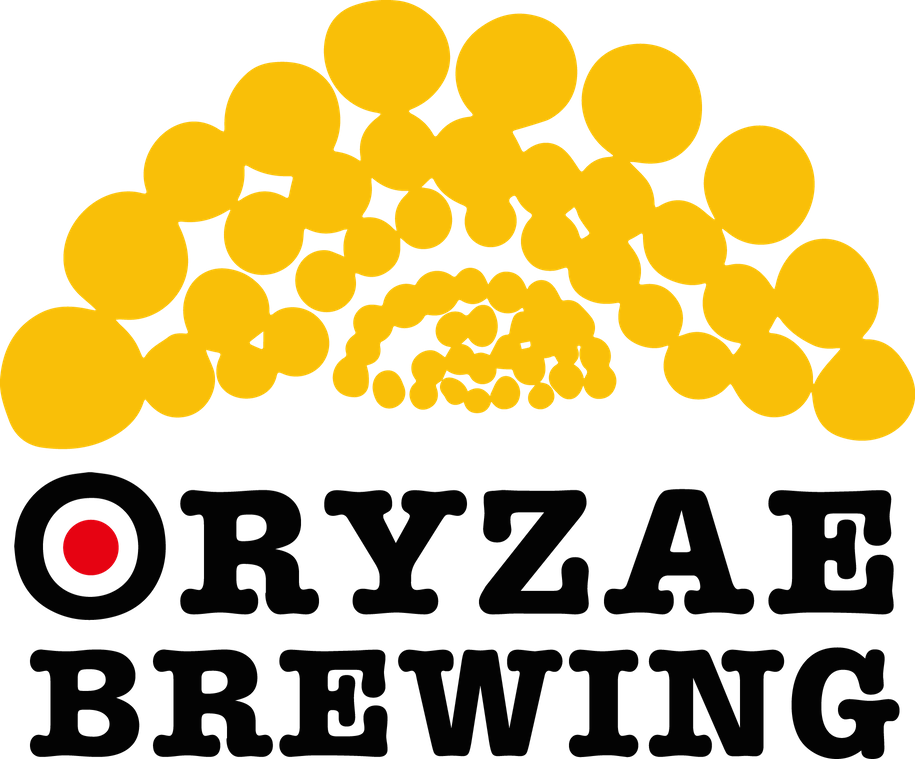前回はオリゼービールの発酵期間が長いというお話しでした 1、2年ほどブローオフチューブから出る泡を眺めていて気がついたこと それは大まかに3回発酵のタイミングがあると言うことです では今回はどういう事象か説明します ホームブリューでよく聞くお話しだと思いますが、 発酵終了の判断目安はブローオフの泡が全く出なくなってから、2、3日様子を見る その後、変化がなければラッキングに移行する と教わります オリゼービールの場合も最初は同じです 最初の2〜4日で旺盛な発酵は終わり、10日目前後には終了します。 (1-1次発酵) その後、2、3日様子を見るのですが、そこからプクプク、ゆっくりと発酵が始まります。(1-2次発酵) 液種により1-2次発酵の期間は異なりますが、比重で言うと 1.012~1.015あたりでしょうか それがようやく終わったと思い、2,3日様子を見るとまた発酵が始まります (1-3次発酵) この1-3次発酵の期間が非常に長いです そして、比重的には0.001~0.002ぐらいしか進みません これがオリゼービールの発酵サイクルです この発酵期間、1-3次発酵が1,2ヶ月なんてこともよくあります では、味的にはどうでしょうか ・1-1で終了すると 明らかにベタついたマウスフィールになります ・1-2で終了すると 飲んだ後、少し唇がペタッとするなぁと言う感じ ・1-3で終了する キレのある感じで になります そして、この段階を進めるにつれて、酵母由来の香りが明らかに良い香りに変わっていきます。違う種類の香りが3回いただける感じです。 以下はイレギュラー ・クヴァイクなど温度をフリーライズさせた時のように、高温経過(28度以上)をとる場合は、1−1で終了します ・セゾンなどの23度〜28度のフリーライズは1−2で終わることもあります ・逆に5度などの低温経過が続くと、澱引きしない限り、数ヶ月続く印象です ・また、麦麹の場合は若干このサイクルが早い印象です 以上が私が観察、経験してきたオリゼービールです もちろん、麦芽不使用、主原料が麹のビールは世界的にも前例がなく、知見や参考文献がありません。 残念ながら日本でも未だにこの手法をフォローしてくださるブルワリーは皆無です。(4年前のスタートから現在の2023年現在でも) この事象に関してにサンプルは私のみになります。 もし、これをご覧になっている方で、何かご経験ありましたら、ぜひ共有してください。 次回は経験からの個人的推測をお話ししたいと思います Last time, we talked about the long fermentation period of Oryzae beer. During my observation of the foam coming out of the blow-off tube for about 1 to 2 years, I noticed a rough pattern of three fermentation stages. Now, let me explain the phenomenon in detail. You might have heard similar stories in home brewing. The general guideline for determining the end of fermentation is when there is no more foam coming out of the blow-off tube. After that, you should observe the situation for 2 to 3 days. If there are no changes, it is usually time to proceed with racking (transferring the beer to another vessel). The same applies to Oryzae beer. Initially, it follows the same process. The vigorous fermentation usually finishes within the first 2 to 4 days and comes to an end around the 10th day (First Stage of Primary Fermentation - 1-1). After that, you should observe the situation for 2 to 3 days, and from there, a slow and gentle fermentation begins (Second Stage of Primary Fermentation - 1-2). The duration of the second stage varies depending on the yeast strain, but in terms of specific gravity, it would be around 1.012 to 1.015. Once you think that stage has finally finished, observe the situation for another 2 to 3 days, and you'll notice fermentation starting again (Third Stage of Primary Fermentation - 1-3). This third stage of primary fermentation can be quite lengthy, and in terms of specific gravity, it only progresses by about 0.001 to 0.002. That's the fermentation cycle of Oryzae beer. During this fermentation period, the third stage of primary fermentation can sometimes last 1 to 2 months. Now, let's talk about the taste. - If fermentation finishes at the first stage (1-1), it will have a noticeably heavy mouthfeel. - If fermentation finishes at the second stage (1-2), you might feel a slight stickiness on your lips after drinking. - If fermentation finishes at the third stage (1-3), it has a dry mouse feel. As you progress through these stages, you'll notice the yeast-derived aroma gradually transforming into a pleasant fragrance. It's like experiencing different types of aromas in three rounds. Here are some irregularities: - When using certain yeast strains like Kveik and adopting a high-temperature regime (above 28 degrees Celsius), fermentation may finish at the first stage (1-1). - With styles like Saison that undergo a free rise temperature ranging from 23 to 28 degrees Celsius, fermentation may finish at the second stage (1-2). - On the contrary, when subjected to low-temperature conditions around 5 degrees Celsius, fermentation can continue for several months unless the yeast sediment is removed. - Additionally, with barley koji, this cycle tends to be slightly faster. The above is my observation and experience with OryzeBeer. Of course, there are no precedents or references globally for a beer that uses koji as the main ingredient without using malt. Unfortunately, there are still no breweries in Japan or anywhere else that follow this method, even after four years since its inception in 2019 (as of the current year, 2023). As for this phenomenon, the sample size is limited to my own experience. If anyone reading this has any relevant experiences, please feel free to share them. Next time, I would like to share some personal speculations based on my experience.
